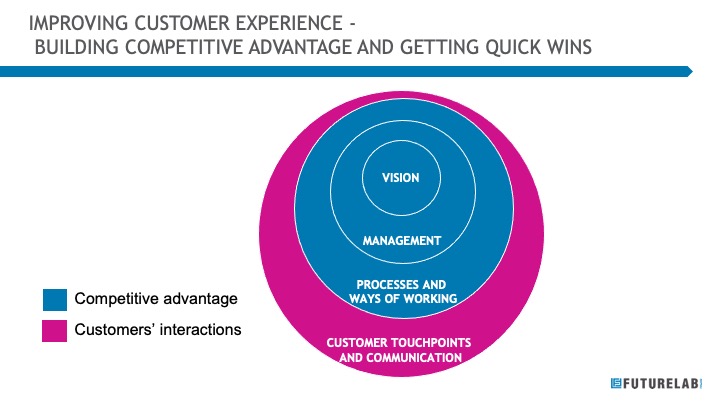
In the second half of the year, it is typically time to update the company strategy. The process and content vary from company to company, but will ultimately result in a documentary of decisions and policies for the coming year. Now every person and team responsible for developing customer experience needs to be awake! Right now is the time to ensure that customer experience is not left just as a sentence in the strategy, but also visible in the implementation plan.
Customer experience has already been rooted in most company strategies. As a strategy statement it might become “industry’s best customer experience” or “unique customer experience”. Unfortunately, the intention often remains at the level of a sentence – the strategy does not turn into an action that would improve customer experience. How to make the change happen? Solutions depend on the company’s starting point on the one hand and the changing needs of customers on the other. A company in a crisis needs to make solutions that are quickly visible in the everyday lives of customers, but a company operating on a solid footing can build change more calmly.
Instead of seeing the development plan only as a calendar-based plan, the development plan should find ways to build sustainable competitive advantage and at the same time achieve rapid results that will be visible “already tomorrow”. The following figure provides a view on how these two aspects meet. Building a competitive advantage requires changes in the direction and management of the company, and at the same time, a company must make changes in customer interactions and communication. Too often these two do not meet.

I want to emphasize that building competitive advantage is not possible by only correcting customer communications and interactions. But this area is typically most visible to the customer, and thus requires careful attention. When developing customer experience, all of the following areas should be taken into account:
Customer experience vision:
- Customer understanding creates a foundation (qualitative studies, customer personas, journey maps)
- Crystallizing the targeted future customer experience involving both management and staff
Customer experience management:
- Customer experience management structure (eg steering group, development team, change agents)
- Resources: time, skills and money
- KPIs that support the vision and the systematic way of measuring CX
- Close the loop model, ie how the collected feedback is used
Processes and operating models:
- Customer promises (internal or external)
- Operations for delivering on promises
- Removing barriers (silos, distribution channels, technology, resources, etc.)
Customer communication and interactions:
- Ways to interact with customers
- Communication channels and methods
- Service design capabilities
- The ability of individuals to encounter customers.
Building customer experience development plan requires holistic view on all of these areas. More detailed planning naturally requires a review and scheduling linked to the company’s planning and budgeting cycle. In my experience, engaging management is critical and involving staff makes implementation easier. Right now is the right moment to start planning your customer experience development roadmap for 2022!
Tags: customer, customer experience, experience, strategy



Comments are closed here.